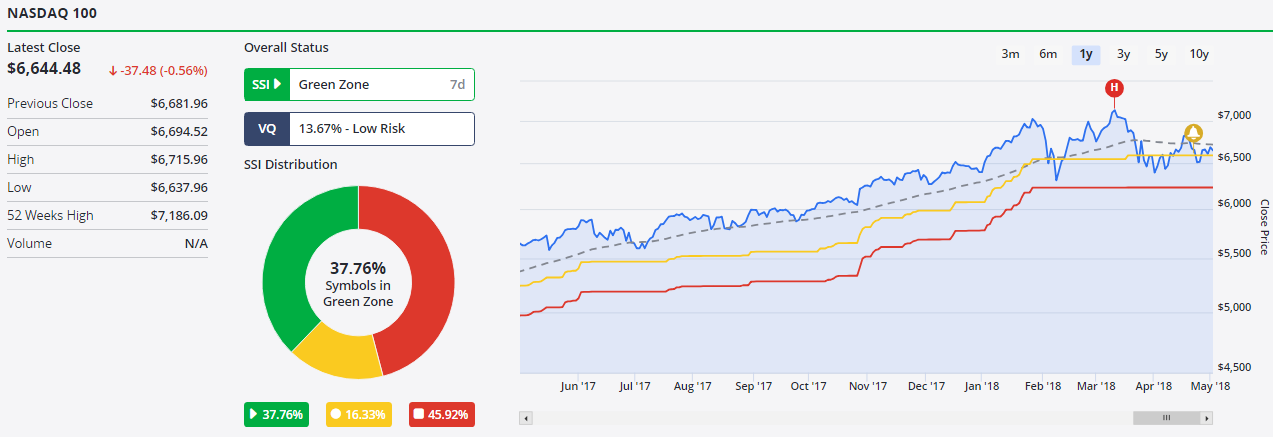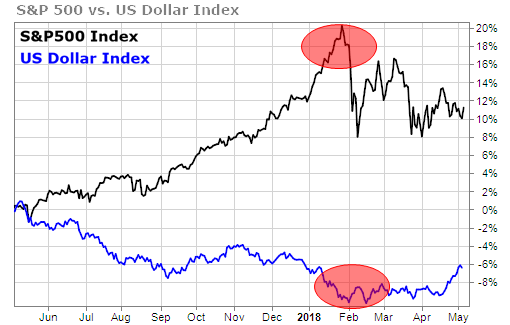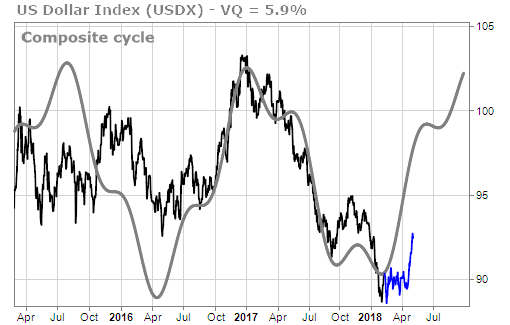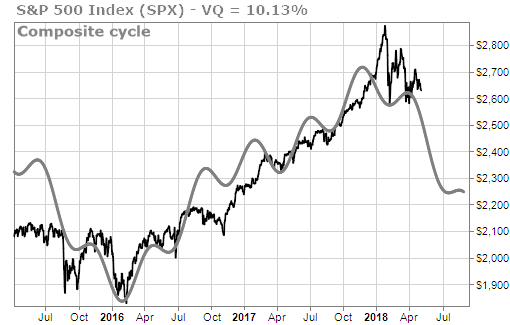It’s been three months since the stock market was rocked in early February with downward moves of close to 10%. The February drop represented an explosion of volatility.
For all of 2017, the major market indices had been their least volatile in decades. One of the most profitable trades of 2017 was being “short” volatility through the purchase of inverse VIX ETFs.
(Don’t feel bad about missing the short volatility trade. It completely “blew up” in February with multiple ETFs completely wiped out.)
February’s volatility sea-change was jarring to longtime market participants. Jack Bogle, the founder of Vanguard and a leading advocate of passive investing, said this in the weeks that followed:
“I have never seen a market this volatile to this extent in my career. Now that’s only 66 years, so I shouldn’t make too much about it, but you’re right; I’ve seen two 50-percent declines, I’ve seen a 25-percent decline in one day and I’ve never seen anything like this before.”
Since February’s big jump in volatility, things have calmed down a little. The Dow and the S&P have not seen as many wild swings and two percent range days.
But that doesn’t tell the whole story. The averages are now breaking down internally.
As of this past Wednesday, our new Ideas by TradeSmith indicators showed that more than 40% of the stocks in each of the major averages are currently in the Stock State Indicator (SSI) Red Zone.
We showed you in this article how dangerous the markets become when more than 40% of the stocks are in the Red Zone. Here are the current numbers:
- S&P 500 – 43% in SSI Red Zone
- S&P 400 Midcap – 44% in SSI Red Zone
- S&P 600 Small cap – 45% in SSI Red Zone
- Nasdaq 100 – 46% in SSI Red Zone
- DJIA – 60% in SSI Red Zone (18 out of 30 stocks are stopped out!)
In the past six weeks alone, the Nasdaq 100 has seen 15% of its stocks move into the SSI Red Zone, yet the index is essentially the same as it was in the third week of March.

How can that be? What is keeping the Nasdaq 100 afloat when almost half of the stocks are in the SSI Red Zone?
Just three stocks are doing the heavy lifting: Apple (AAPL), Amazon (AMZN), and Microsoft (MSFT).
These three stocks make up more than 30% of the Nasdaq 100 Index. And these three stocks have done quite well, highlighted by blowout earnings from AMZN and AAPL. They all remain in the SSI Green Zone.
The Nasdaq is still benefiting from a halo of good earnings news in regard to the FANG companies. Google’s earnings were also excellent, and Facebook eased investor fears with its continued ability to book profits in spite of the Cambridge Analytica scandal.
Then too, Apple got a boost on reports of more aggressive buying from Warren Buffett. Berkshire Hathaway reportedly bought an incredible 75 million Apple shares in the first quarter.
But the good news from FANG stocks is mostly in the rearview mirror now, and arguably “priced in” to current stock valuations. So, what happens if even one of these stocks begins to stumble? It could result in the swift downturn we warned you about here.
With so much optimism already baked into FANG shares, there’s a chance that selling pressure in other areas of the market could catch up to them. And that selling pressure is being increased by a strengthening US dollar.
One of the indicators we follow is the relationship between the S&P 500 and the US Dollar. Historically, they are negatively correlated. This means they have an inverse relationship.
The dollar index bottomed at the same time the S&P 500 made its all-time high, as you can see via the chart below. Since then, the dollar has been rising, and the market is falling. The inverse relationship remains intact.


Companies in the S&P 500 earn close to half their revenue from overseas. When the dollar strengthens, US exports become more expensive and thus less competitive, while overseas earnings booked in foreign currency become less valuable.
At the same time, the time-cycle forecast for the S&P 500 is bearish over a comparable time window. These forecasts (for a stronger dollar and a weaker S&P) thus reinforce each other… in a bearish direction for stocks.

With the major US indices showing more than 40% of their stocks stopped out, you too may have had a large percentage of your stocks hit their SSI Stops. You should already have a risk management plan in place. If not, don’t delay!
I’ve been stopped out of some of my positions and am happy to be holding more cash given these current market conditions.
These are challenging times for investors, no doubt. Please note, however, that I’m not saying that it’s time to dig up your buried gold and run for the hills. It’s just a time to be more vigilant, defensive, and selective.





